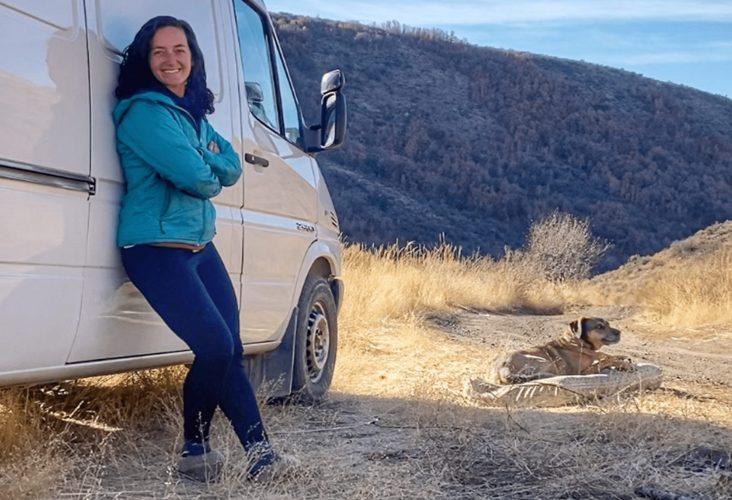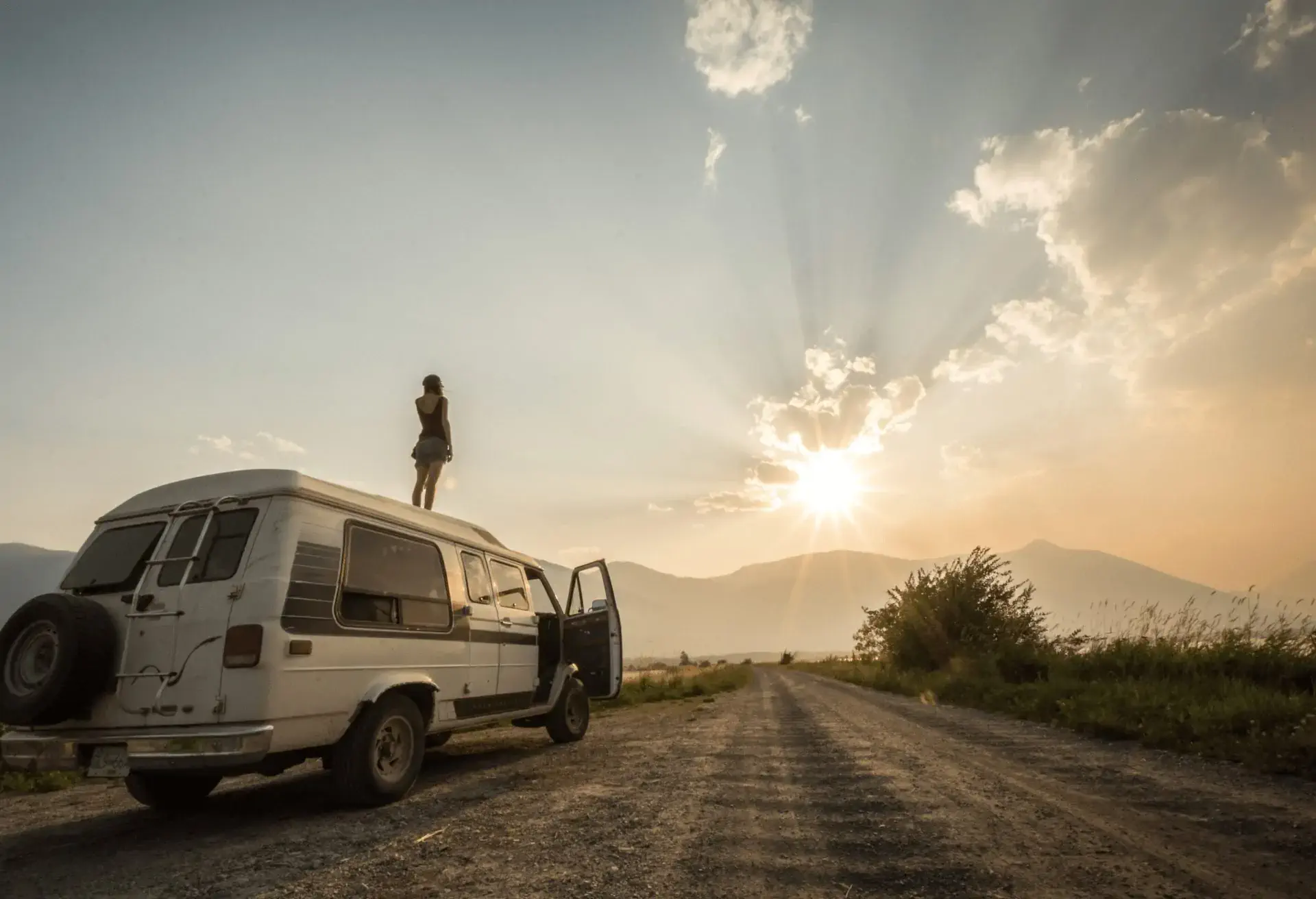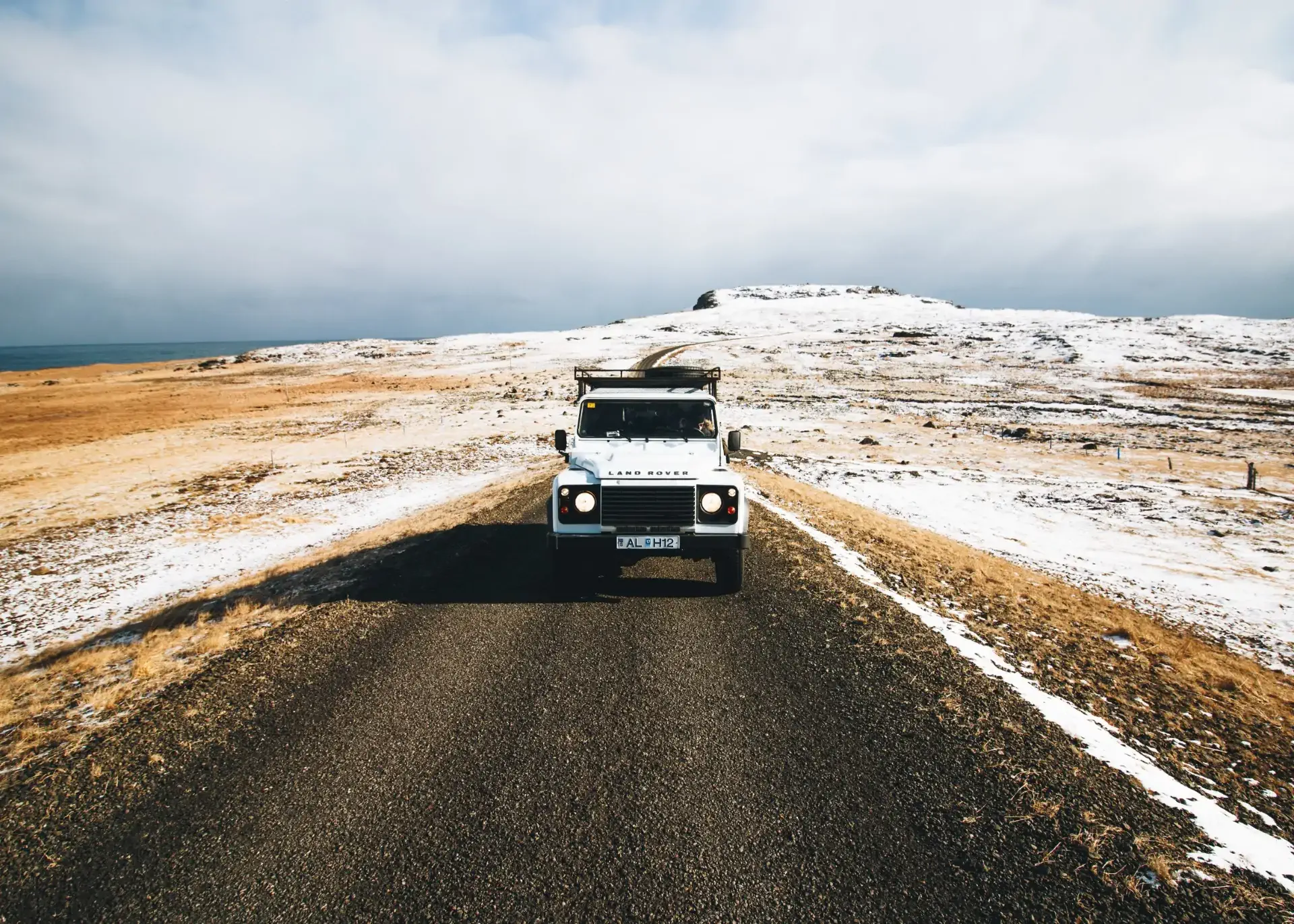For Women’s History Month, we wanted to talk to woman travelers who have taken on new and exciting travel challenges. And as this past year has sparked a renewed interest in finding alternative ways to experience the world, we linked up with Jenny Leveille who has embarked on her own version of #vanlife – living nomadically in a self-converted van. It is important to note that Jenny made a conscious choice to live a nomadic life, and we realize for other modern-day nomads, that is not always the case.
How it started
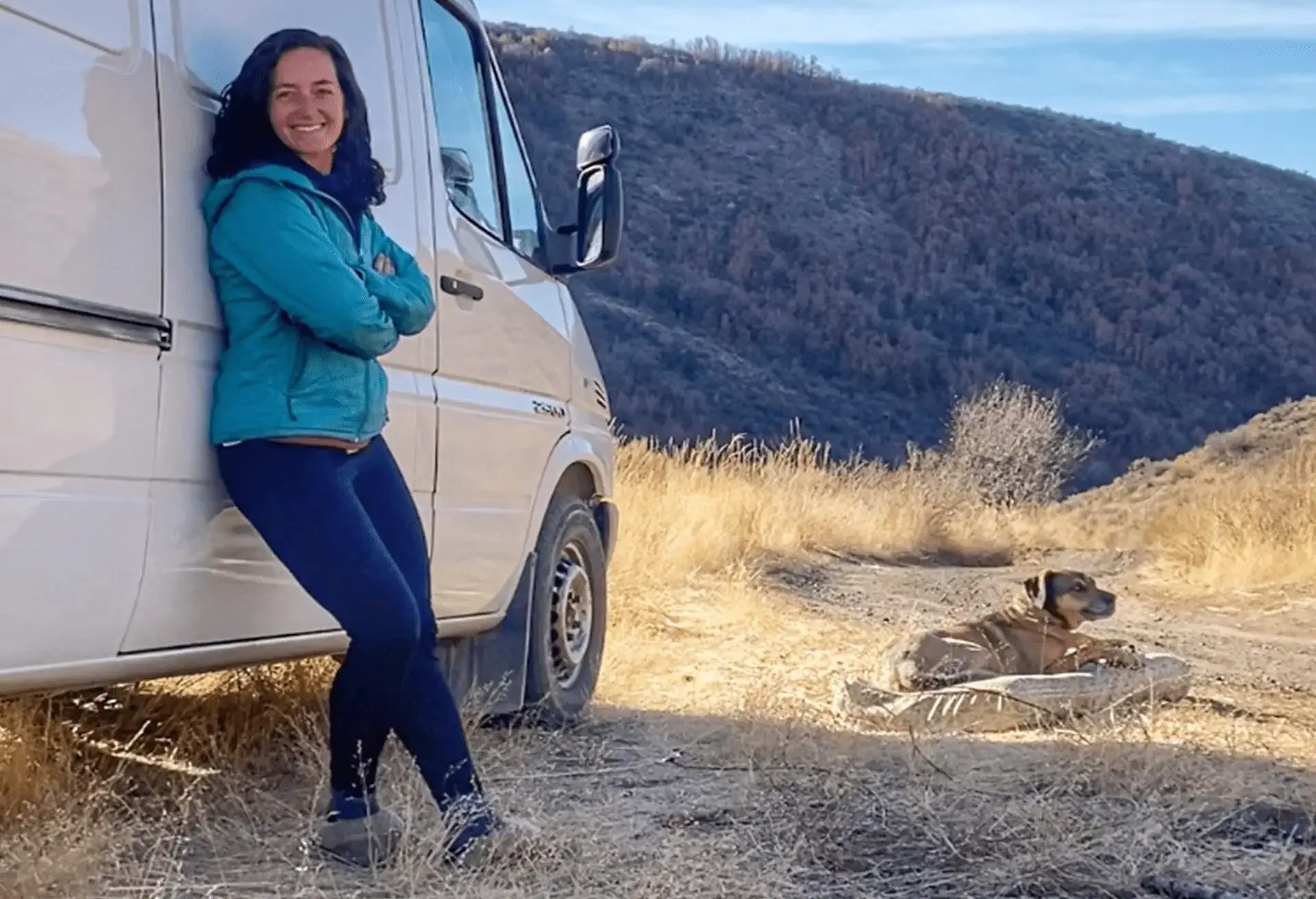
My journey into van life was not your typical Instagram fairytale. Instead, it started with a broken promise and a broken heart.
I was a 28-year-old teacher in my first serious relationship after a divorce. But it was in this new relationship that I experienced the outdoors in a way I hadn’t before.
Each Friday afternoon, we’d pack up the car and head “off the grid,” squeezing every minute out of the weekend. Sometimes we’d even camp Sunday night and rush to work on Monday.
We were insatiable. We brainstormed ways to take our passion for camping to the next level, stumbling upon what is now coined as “vanlife.”
Plans started falling into place quickly, but deliberately. With four months until our anticipated departure date, we started making big moves.
I informed my principal that I would not be returning for the next school year and I declined to renew the lease on my apartment. My partner met with a realtor and began selling his belongings.
But just three weeks before my apartment lease concluded, my world turned upside-down. He ended our relationship.
I was not only heartbroken, I was downright terrified. I was about to be homeless, I had already quit my job, and now I had no partner.
We had created this dream together, so the thought had never crossed my mind to do it alone. But now I found myself in limbo between the life I had been dreaming of and the one I had already started leaving behind.
I had a scary decision to make.
I didn’t know how I’d pull it off. I didn’t have a remote job or money saved. I didn’t know the first thing about traveling solo or building a van.
I knew that if I tried to piece my old life back together, I’d always wonder what it would have been like if I had just taken the chance. I also knew I couldn’t live with that regret.
So, I made a decision. And a few weeks later, I had a big, empty van.
I became an expert at asking for help and graciously accepting it. I learned about plumbing and electrical and power tools. Where I lacked skills, I had patience and grit (and YouTube) to bridge the gap.
Four months later, my canine sidekick and I drove away from Salt Lake City in our new home-on-wheels to begin our life on the road.
How it’s going
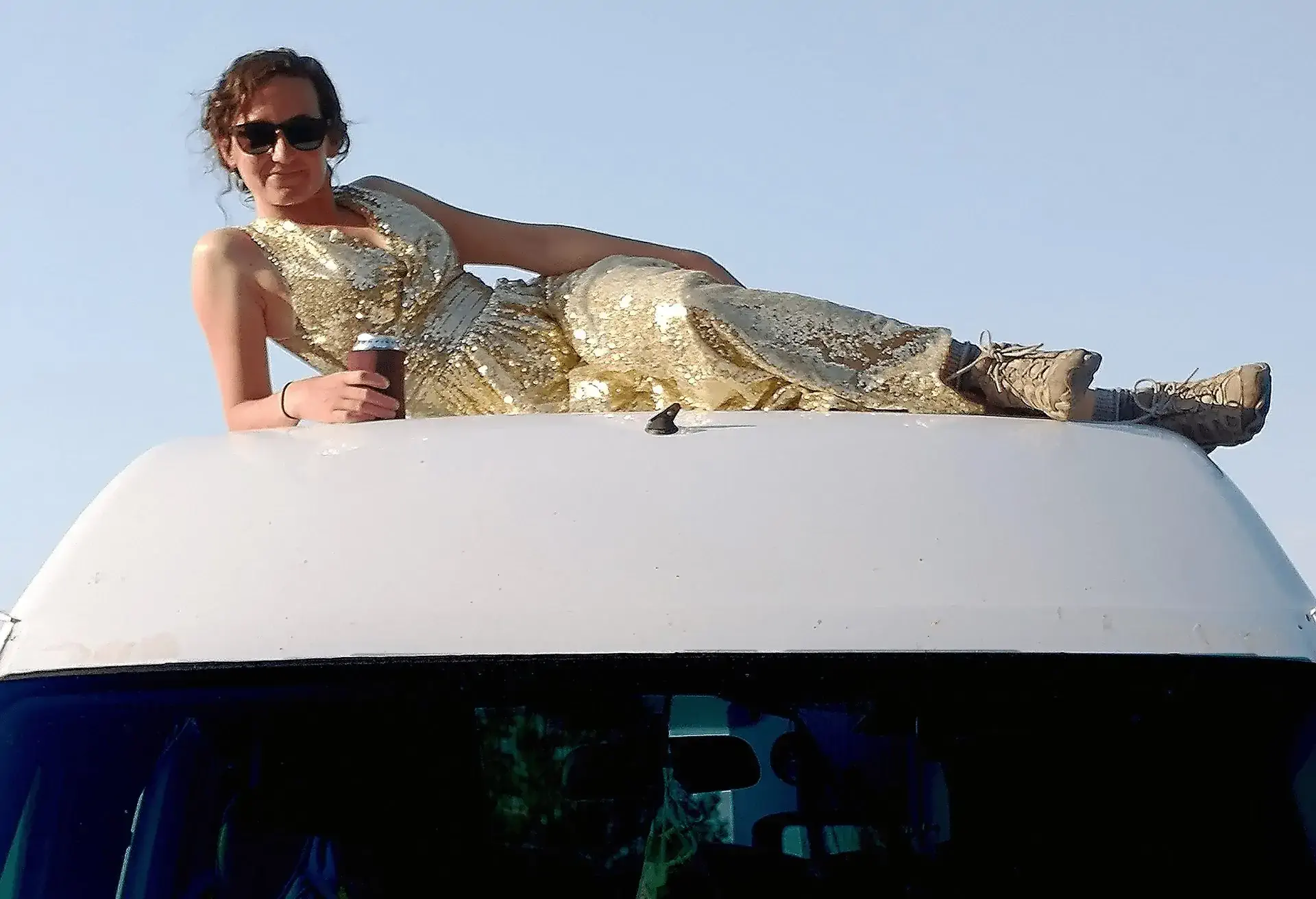
Two and a half years later, we’re still out here.
It hasn’t been an easy journey. From breakdowns to emergency vet visits, we’ve weathered our fair share of storms. While it’s often easy to jump to the biggest van life tragedies, I sometimes think it’s the little things that are the hardest part of living this way.
It’s not being able to shower after a long day on the trail. It’s always being a little too hot or too cold. It’s spending far too much time thinking about things like water and power and how full or empty your tanks are.
The logistics of living in a vehicle can be exhausting.
But the most difficult parts of this lifestyle all feel worth it. Living nomadically has allowed me to focus on the things that are most important to me.
I’ve built a life around happiness and pursuing what makes me feel most alive. In two and a half years, I’ve seen more than most people will in a lifetime (and so has my dog!).
I’ve learned to live minimally to make space for what really matters. I’ve stopped waiting until “someday” to live the life of my dreams.
How to make it happen for yourself

I truly believe this lifestyle can be available to anyone who wants it. But first, you have to tear down all of the glamorous vanlife photos you’ve pasted on your dream board.
Anyone can live “the vanlife,” but your version of it might look different than the picture-perfect aesthetic you see on the internet.
If you’re dreaming of making the jump into life on the road, think about what you want out of it and why. Prioritize what you’re looking for and then come up with a realistic plan that fits within your budget and meets your needs.
You don’t need an $80,000 sprinter van with a professional custom-build and 4×4 to live on the road.
There are a million ways to make this dream a reality once you’ve let go of the idea that there’s only one way to vanlife. Maybe you’re going to start with a cot and a sleeping bag in the back of a minivan.
Maybe you have the money saved up to buy a Class B RV. Just do yourself a favor and try to step away from comparing your vanlife to everyone else’s online.
I also recommend thinking critically about what it will look like for you. Do you get lonely spending stretches of time by yourself? Are you alright with days between showers or will you need to stay in RV parks or campgrounds with more amenities? Will you be working remotely and need consistent internet?
These will all influence how your variation of vanlife unfolds.
I think it’s also important to note that vanlife isn’t as cheap as people may think. It can be a great way to reduce your spending, but only if you live on a small budget.
I know plenty of other vanlifers (myself included) who still manage to spend upwards of $2000 a month on basic living expenses.
There are ways to live off less than that and ways to spend a lot more, but vanlife is far from free. It’s good to have an idea of what your monthly budget might be and always plan for unexpected expenses.
COVID-19 has brought a shift in the job marketplace and now more companies are allowing for remote positions. But a remote job isn’t the only way to fund this lifestyle.
There are plenty of other options such as finding seasonal work and traveling to a new location every few months, or working as a campground host to help cover the costs of paying for campsites.
If you’re realizing you have no idea what your priorities are for life on the road, consider renting a van first so you can give vanlife a test drive. If possible, I’d recommend a three-week trip to get a more realistic feel for what it’s like once the initial thrill subsides.
While I feel like I could write a manual for living on the road, one of the best parts is learning it all for yourself. There’s so much to explore and discover out there, but you’ll do just as much self discovery as well.
If you’re convinced that vanlife is for you, or if you can’t stop wondering if it might be, then I encourage you to go for it. If you get out there and realize it’s not for you, then you can always turn around. Or maybe instead, you’ll find that while a life of wandering might not be exactly what you imagined, it’s exactly what you needed.
Jenny Leveille and her dog, Dakota, have been traveling full-time in their self-converted van since 2018. Jenny tells her stories from the road on her podcast, Adventures from the Van. You can also find her on Instagram and Facebook, or follow along on her blog, Adventures for the Van.
The views and opinions expressed herein are those of the author(s) and do not necessarily reflect the views and opinions of KAYAK Software Corporation, its subsidiaries, and their respective parent companies or affiliate companies.


